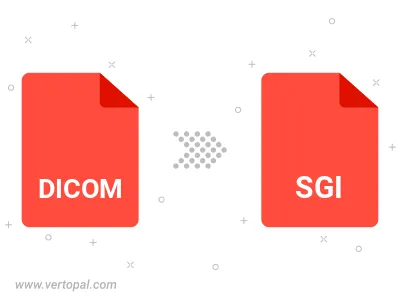Convert DICOM to SGI
Convert DICOM images to SGI format, edit and optimize images online and free.

DICOM, or Digital Imaging and Communications in Medicine, is a standardized file format used in the field of medical imaging. It facilitates the storage, exchange, and transmission of medical images and related information between devices from different manufacturers, ensuring interoperability in healthcare environments. Originating from efforts by the National Electrical Manufacturers Association (NEMA) and the American College of Radiology (ACR) in the 1980s, DICOM's evolution has played a crucial role in the development of advanced medical imaging technologies and systems.
The SGI file extension stands for Silicon Graphics Image, a raster graphics file format developed by Silicon Graphics Inc. primarily for their IRIS workstations. This format, originating in the late 1980s, supports uncompressed and RLE-compressed data with up to 48-bit color (16 bits per channel for RGB) and an alpha channel. SGI files are widely utilized in 3D graphics, visualization, and high-end imaging due to their ability to store high-quality images and intricate details, making them an essential asset in professional graphics and animation industries.
Click the Choose File button to select the DICOM file.
Pick any DICOM to SGI tools if you need to edit your DICOM file, then click the Convert button.
Let the file convert, then you can download your SGI file right afterward.

To change DICOM format to SGI, upload your DICOM file to proceed to the preview page. Use any available tools if you want to edit and manipulate your DICOM file. Click on the convert button and wait for the convert to complete. Download the converted SGI file afterward.
Follow steps below if you have installed Vertopal CLI on your macOS system.
cd to DICOM file location or include path to your input file.Follow steps below if you have installed Vertopal CLI on your Windows system.
cd to DICOM file location or include path to your input file.Follow steps below if you have installed Vertopal CLI on your Linux system.
cd to DICOM file location or include path to your input file.